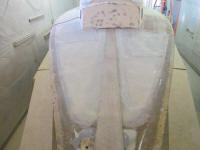
110 Cookson Lane | Whitefield, ME 04353 | 207-232-7600 | tim@lackeysailing.com
The original foredeck shape was fairly flat from side to side, with a gentle sweep upwards going forward, following the sheerline. I thought a bit more crown would look and function better, and to that end I prepared and installed two layers of 4" tabbing down the centerline of the foredeck, from coachroof to stem. This raised area would, once faired in, provide just bit more camber to the deck.
While allowing the new tabbing to cure, I inspected the cockpit seats and sole to determine the condition of the core within. I knew the sole was damaged beneath the old steering pedestal location, and the small hatch over the icebox was soft, but wasn't sure what else I'd find.
After sounding and drilling a number of test holes, I located a few areas with questionable core, including the cockpit sole as expected, plus the seating areas in way of the old traveler mount (not surprisingly), and other areas where the core appeared sound, but the top skin had separated from the coring beneath, all located at the forward end of the cockpit. I was generally pleased with what I saw as a minimal amount of repair work ahead, having been expecting worse.
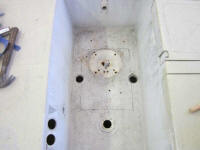
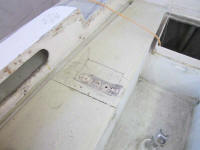
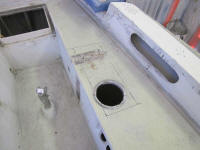
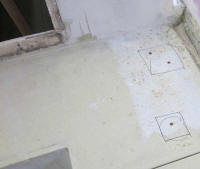
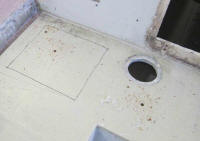
With a saw, I opened up the various areas and, where applicable, removed the damaged core. Inevitably, I found I had to slightly expand the boundaries of several areas once I started digging out the core, to ensure that I removed all damaged or wet coring. These photos don't show it yet, but later I expanded the cockpit area aft by a few inches to include the fuel fill hole, as I'd found slightly dampened core (and plywood around the fill) and felt it was better to remove a little more. This is visible in later photos on this page.
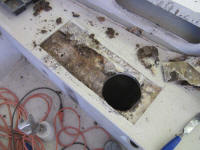
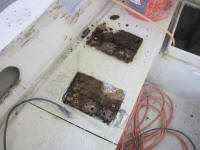
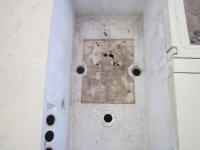
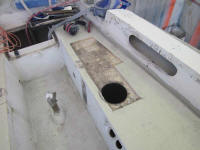
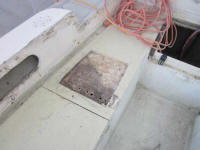
On the bridgedeck, where my testing had revealed only top-skin delamination, I set the saw for a shallow cut and removed only the top skin from these areas, revealing (surprise!) more heavily-kerfed plywood core. the plywood itself was dry and in as good condition as it'd ever been.
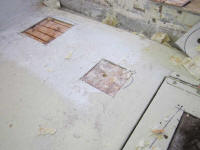
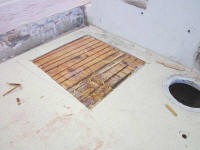
Some of the plywood in the larger port-side section had come up with the top skin, and with the history of the plywood elsewhere in the boat, I elected to remove the other plywood from this opening and recore it, rather than leave the plywood in place.
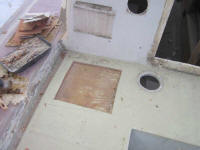
The icebox hatch was clearly soft underfoot, with cracks radiating around a depressed center section. I cut away the damaged top skin to reveal brittle, friable foam insulation beneath, which had clearly not been up to the foot traffic over time, had compressed, and allowed the top skin to bend and crack. Because the insulation was supposedly part of the structure of this hatch, there was no coring. I'd have to remove all the insulation and rebuild the hatch, or build a new one from scratch.
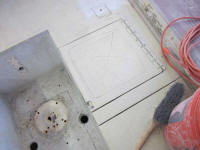
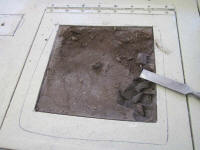
Once I'd removed the core from the open areas, I dug out the damaged remnants from beneath the deck edges as needed, leaving sound core in place. This done, I ground the deck edges around all the uncored areas, creating the necessary tapered bonding areas to tie in the repairs later. I also prepared several other openings for eventual repair, including old instrument holes in the cabin bulkhead.
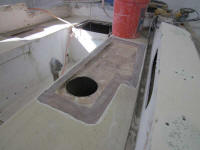
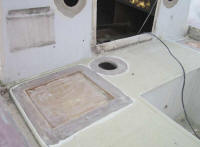
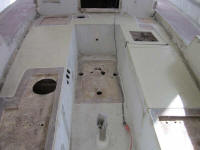
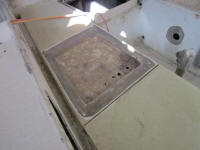
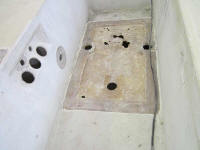
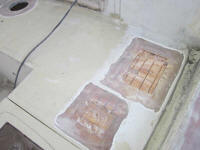
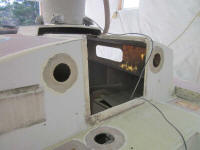
Afterwards, I applied a second round of fairing compound to the port and starboard sidedecks, and a first round to the foredeck.
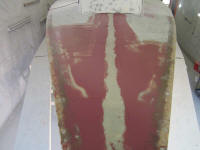
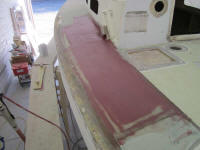
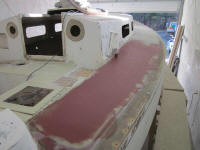
Total Time on This Job Today: 7.25 hours
